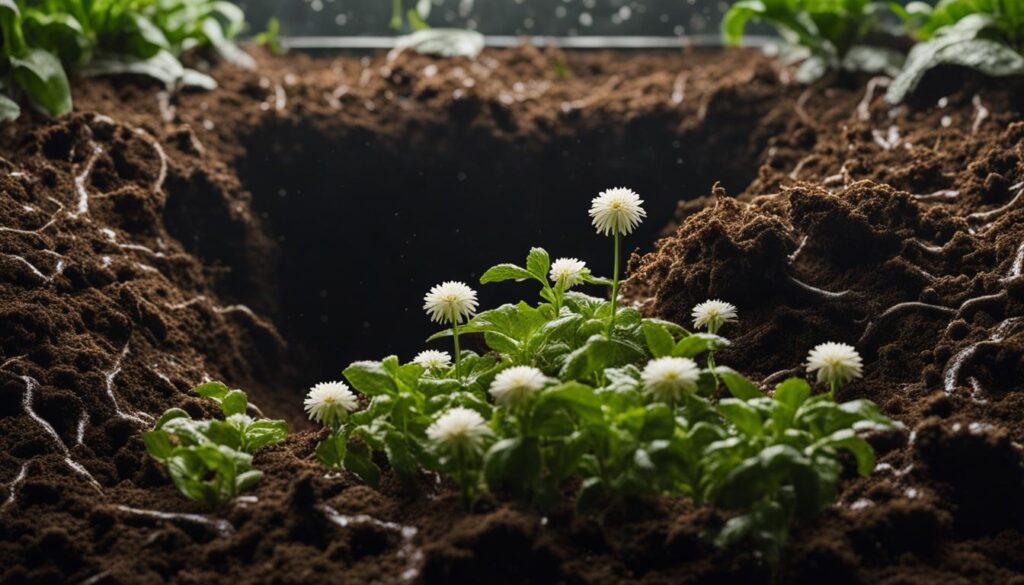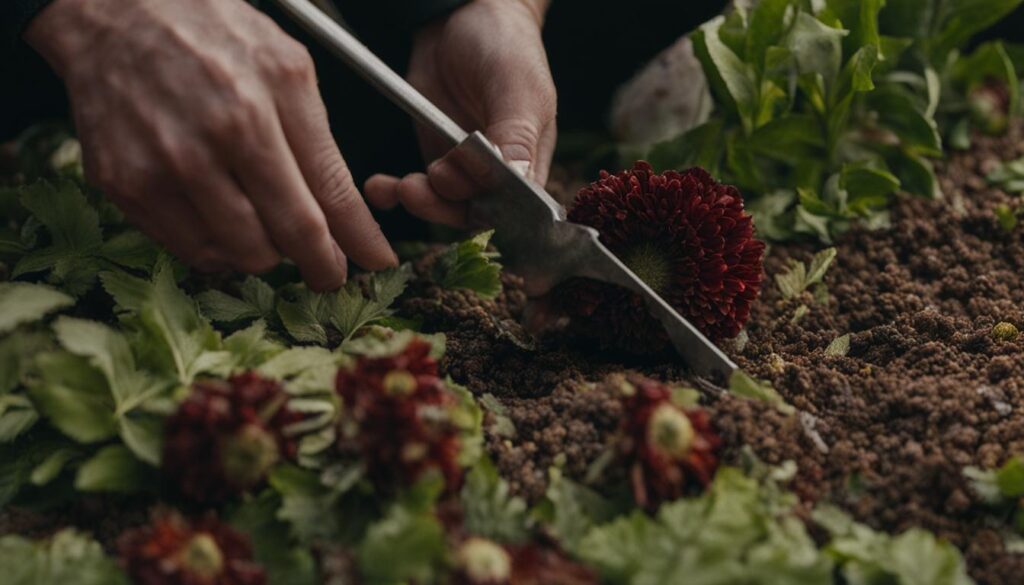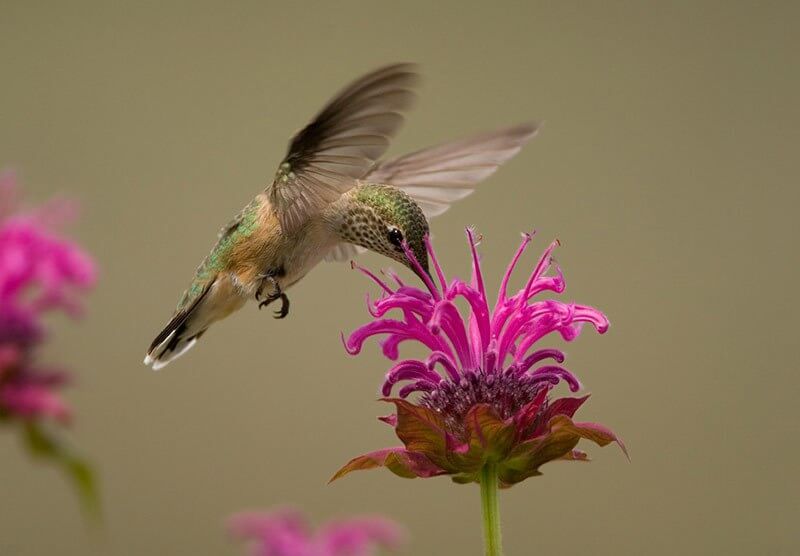Belgian Mums, a subset of garden chrysanthemums, have generated interest and confusion regarding their classification as annual or perennial plants. These vibrant puffball beauties, synonymous with fall, largely depend on various factors, such as the type, planting time, and care practices for their perennial potential.
To enhance their chances of surviving beyond a single season, particularly in Ohio, it is recommended to plant Belgian Mums in the spring, allowing them to establish a robust root system before the fall bloom.
Choosing plants with more buds and fewer flowers can signify a younger plant with growth potential. Providing at least six hours of sunlight to avoid leggy growth, nutrient-rich compost, sufficient hydration without waterlogging, and proper overwintering are key care steps outlined for potential perennial success.
Key Takeaways
- Belgian Mums can be classified as either annual or perennial plants, depending on care and planting conditions.
- Planting Belgian Mums in the spring allows for optimal root establishment, increasing the chances of perennial success.
- Provide at least six hours of direct sunlight to maintain the plant’s iconic shape and growth.
- Feed your mums with nutrient-rich compost and ensure proper drainage to avoid waterlogged roots.
- Overwintering strategies, such as mulching and indoor storage, can improve the survival of Belgian Mums through harsh winter conditions.
The Enigmatic Lifespan of Belgian Mums
The lifespan of Belgian Mums can be quite unpredictable and is largely dependent on the conditions under which they are planted, cultivated, and managed throughout the seasons. While many garden mums are classified as perennials capable of surviving harsh winters, late fall plantings can lead to plants being reduced to dead stems by spring. Belgian Mums, in particular, can be both prolific and hardy, as they originate from a country known for its durable varieties.
Perennial chrysanthemums, including Belgian Mums, can return annually if given proper care and planting conditions that foster root development and successful overwintering. Determining whether garden mums are annuals or perennials ultimately comes down to their species, planting time, and the chrysanthemum care provided throughout their growth and preservation.
| Factors Affecting Belgian Mums Lifespan | Explanation |
|---|---|
| Type | Some varieties are more hardy and able to withstand harsher conditions, increasing their chances of returning the following year. |
| Planting Time | Planting in spring or early fall increases the chances for robust root system development, which is crucial for overwintering success. |
| Chrysanthemum Care | Proper care practices, including adequate sunlight, well-drained soil, and consistent watering, can significantly impact the potential for perennial reemergence. |
- Choose hardy varieties for optimal success in colder climates.
- Plant Belgian Mums in spring or early fall to establish a strong root system before winter.
- Ensure that the plants receive at least 6 hours of sunlight daily.
- Use nutrient-rich, well-draining soil for planting and care.
- Water regularly, ensuring proper drainage to avoid waterlogged roots.
- Maximize overwintering success with proper care techniques.
In conclusion, understanding the enigmatic lifespan of Belgian Mums can greatly improve their chances of flourishing year after year. By providing the right care and planting conditions, these beautiful fall chrysanthemums have the potential to bring joy to your garden annually, whether as hardy annuals or perennials.
Optimum Planting Seasons for Thriving Belgian Mums
When considering the Belgian mums planting season, the best time to plant these vibrant fall flowers to cultivate them as perennials falls within the spring or no later than late summer to early fall. This vital timeframe allows the prized mums to establish a strong root system before the onset of cold weather and winter frosts, enhancing their potential for perennial growth.
The Ideal Timeframe to Establish Root Systems
Proper root establishment is crucial for Belgian mums to exhibit perennial characteristics. During the spring or early fall, the milder weather conditions and cooler temperatures allow these perennial mums to develop strong root systems, thereby granting them a better chance of surviving through harsh winters and thriving in subsequent years. This establishment period is crucial for plants that have the potential to grow back year after year, offering vibrant displays of fall colors in gardens across the country.
Late Season Planting: A Gamble for Perennial Hope
Though it is common for gardeners to plant mums during the late season in anticipation of their fall bloom, this practice can be a risky gamble for those hoping to achieve perennial longevity. Planting mums too late in the fall may interfere with proper root formation and acclimation to the colder weather, increasing the risk that they will not survive through the winter months, especially in northern climates.
- Early spring planting allows for ample root establishment time.
- Late summer to early fall planting offers a limited timeframe for roots to develop before winter.
- Late fall planting may result in insufficient root development and significantly higher perennial planting risks.
By adhering to the ideal planting season guidance and providing proper care to the mums throughout their growth, gardeners can increase their chances of boasting lush, flourishing Belgian mums in their landscapes, even encouraging these captivating chrysanthemums to return year after year as beautiful heralds of autumn.
Selecting the Best Varieties for Perennial Success
To maximize perennial success with Belgian mums, consider selecting varieties such as Belgian, Perennial, Igloo, and Yoder types, each with unique characteristics. Belgian mums, standing out as supermums, are especially prolific and hardy, often able to withstand inclement weather and potentially return each year with proper care. Perennial and Igloo mums also demonstrate resilience in various climates, flowering in a rich array of colors and thriving as perennials across certain zones.
When selecting the best Belgian Mum varieties for your garden, prioritize the attributes that most closely align with your gardening goals and the specific conditions of your planting area. The following table presents an overview of these exceptional varieties to aid in your decision-making process:
| Variety | Characteristics | Hardiness |
|---|---|---|
| Belgian Mums |
|
Notable hardiness in various climates and conditions |
| Perennial Mums |
|
Resilient perennials in specific zones |
| Igloo Mums |
|
Hardy in diverse temperatures and climates |
| Yoder Mums |
|
Capable of adapting to various environmental factors |
With an understanding of the best Belgian Mum varieties available, you’ll be better equipped to select the perfect addition to your garden. Focusing on perennial success and hardy varieties can enhance your garden’s longevity and vibrancy with minimal effort, allowing you to enjoy these magnificent blooms for years to come.
Prime Conditions for Belgian Mum Cultivation
Belgian mums, much like other chrysanthemums, demand specific conditions to enable successful cultivation. In order to grow these distinctive plants with greater possibility for perennial reappearance, adhering to the optimal conditions is crucial. The fundamental elements to consider when cultivating Belgian mums include sunlight exposure, soil composition, and consistent watering practices.
- Sunlight exposure: Belgian mums require a minimum of five to six hours of direct morning sunlight to thrive, sustaining healthy growth and blooming. Insufficient sunlight can negatively impact the plant’s stature, leading to elongated, weaker stems.
- Soil composition: The plants prosper in fertile, well-draining soil that sustains a balance of moisture and nutrients. Amending the soil with compost and phosphorus-rich fertilizers can encourage root development while averting problems related to excessive moisture retention.
- Consistent watering practices: Properly hydrating Belgian mums without causing waterlogging is essential. This balance can be achieved through regular watering that keeps the soil moist, yet not soggy, particularly during the growing season.
The following table highlights key aspects of the prime conditions required for Belgian mums cultivation:
| Condition | Description | Impact on Belgian Mums |
|---|---|---|
| Sunlight exposure | Minimum of 5-6 hours of direct morning sunlight | Promotes healthy growth, prevents elongation, and supports blooming |
| Soil composition | Fertile, well-draining soil amended with compost and phosphorus-rich fertilizers | Boosts root development, supports overall plant health, avoids excessive moisture retention |
| Watering practices | Regular hydration maintaining moist but not soggy soil | Keeps plants healthy, prevents dehydration, and allows optimal nourishment without risk of root rot |
Proper seasonal maintenance for mums is crucial in ensuring the health and longevity of your Belgian mums. Implementing certain care techniques, such as deadheading chrysanthemums and monitoring pests, can contribute to a more vibrant and abundant growth. Here are some invaluable tips on caring for your Belgian mums throughout the seasons:
- Deadheading chrysanthemums: Regularly remove spent flowers by pinching them off the plant, but avoid pruning branches until spring. This practice encourages a fuller, more vigorous growth and helps prevent the spread of diseases.
- Mulching: Apply a layer of mulch up to four inches thick around the base of the plants. This insulates the roots, retains soil moisture, and inhibits weed growth. Opt for organic mulches, such as shredded bark or composted leaves, which also enrich the soil as they decompose.
- Pest monitoring: Keep an eye out for common pests, such as aphids, spider mites, and thrips that may infest your Belgian mums. Proactively addressing potential infestations prevents severe damage to the plants and helps maintain their overall health.
- Fertilization: Feed your Belgian mums with a balanced, slow-release fertilizer starting in spring till the blooming period. Discontinue fertilization once blooming commences to preserve flower vibrancy and prevent excessive vegetative growth at the expense of blooms.
| Season | Key Maintenance Tasks |
|---|---|
| Spring | – Pruning back dead branches – Applying slow-release fertilizer – Monitoring and managing pests |
| Summer | – Deadheading spent flowers – Monitoring and managing pests – Watering according to weather conditions |
| Fall | – Continuation of deadheading – Preparing plants for winter (mulching, insulation) – Monitoring and managing pests |
| Winter | – Insulating plants with mulch – Monitoring soil moisture – Providing occasional watering during dry periods |
Consistent and attentive Belgian mums care through every season ensures that your plants flourish and remain healthy. Keep in mind that each garden environment is different, and your mums might need unique care tailored to your specific climate and conditions. By closely observing your Belgian mums, adapting your care techniques, and incorporating these maintenance tips, your fall garden will reward you with dazzling, vibrant blooms.
Overwintering Strategies to Preserve Belgian Mums
When it comes to overwintering mums and preserving your treasured Belgian chrysanthemums, various strategies can be employed to enhance their chance of survival through harsh winters. Implementing the right winter care for chrysanthemums will significantly increase the odds of your mums returning to your garden season after season. In this section, we will explore some of the essential steps to take to ensure successful Belgian mums preservation.
- Post-Blooming Care: Once the fall blooming has ceased, refrain from pruning spent blooms and branches. This allows the remaining foliage and branches to serve as insulation during winter.
- Water Run-off Troughs: After the first hard frost, create shallow water run-off troughs around your plants to allow excess water to drain away from the roots while still promoting good moisture retention.
- Mulching: Apply a thick layer of mulch, four to six inches deep, around the base of your mums to protect the root system from fluctuating temperatures. Consider using organic mulch materials such as straw, leaves, or wood chips.
- Indoor Storage: If you have container-grown mums, move them indoors to a cold, dark place such as an unheated garage or basement. Ensure the pots are watered lightly, as needed, to keep the soil moist but not soggy.
- Gradual Reacclimatization: As spring nears, slowly reacclimatize your Belgian mums to outdoor conditions. Begin by placing them in a sheltered area outdoors during the day and bring them back inside at night. Gradually increase the length of time outside, eventually leaving them out overnight before replanting them in your garden.
Implementing these essential overwintering strategies will help protect your Belgian mums, giving them a better chance of surviving winter and returning to your garden as vibrant, flowering plants year after year.
How Can Pumice Soil Mix Benefit the Growth of Belgian Mums as Annual or Perennial Plants?
Belgian mums thrive in optimal gardening with pumice soil mix. The porous nature of pumice allows for better water drainage and aeration, preventing root rot and promoting healthy root growth. This results in stronger, more vibrant annual or perennial Belgian mums that can withstand various weather conditions and bloom abundantly.
Unlocking the Potential of Your Belgian Mums
Belgian mums, prized for their fall-blooming beauty, possess the potential to grow as either annual or perennial plants, depending on factors such as planting time, variety selection, and cultivation practices. Whether your goal is to enjoy their vibrant blooms for a single season or multiple years, understanding and implementing optimal care methods enhances the chances for a successful display of these dazzling garden chrysanthemums.
Ensuring a robust root system is key to nurturing Belgian mums as perennials, making Spring or late summer planting crucial for their longevity. Additionally, selecting prolific and hardy Belgian variations, alongside providing proper care – including ample sunlight, nutrient-rich soil, and balanced hydration – can offer a better chance for these captivating plants to return year after year.
Seasonal maintenance, such as deadheading spent flowers and implementing overwintering strategies, is vital for protecting and preserving your Belgian mums throughout harsh winters and fostering their rejuvenation come springtime. By committing to diligent gardening practices, you can cherish the autumnal splendor of your Belgian mums for seasons to come, turning these enchanting puffball chrysanthemums into a perennial garden staple.










